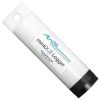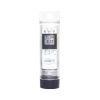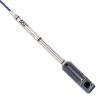Onset HOBO Dissolved Oxygen Logger
Features
- Affordable, high performance dissolved oxygen (DO) monitoring with 0.2 mg/L accuracy
- Optical DO sensor technology for long-lasting calibration with less maintenance
- Requires HOBOware Pro Software and optic base station or waterproof shuttle
- Free ground shipping
- Expedited repair and warranty service
- Lifetime technical support
- More
Overview
The Onset HOBO U26 Dissolved Oxygen Logger measures and records oxygen concentrations in lakes, streams, rivers, estuaries, and coastal waters. The affordable and precise HOBO U26 data logger is recommended for aquatic biology and hydrology research projects. The Onset U26 Dissolved Oxygen Logger is the ideal tool for environmental impact studies as well as ecological and oceanographic research in freshwater and saltwater environments.
Rugged Dissolved Oxygen Technology
The HOBO Dissolved Oxygen logger is a standalone logger that uses RDO Basic Technology to measure dissolved oxygen (DO). The logger has an optical sensor that provides 0.2 mg/L accuracy. The logger also features an easily replaceable sensor cap and an integrated temperature sensor. Using the data offloaded from the Onset HOBO U26 logger, the HOBOware Dissolved Oxygen Assistant can calculate percent saturation and salinity-adjusted DO concentration as well as correct for measurement drift from fouling (additional meter or logger measurements required).
| Dissolved Oxygen | ||
| Sensor Type: | Optical | |
| Measurement Range: | 0 to 30 mg/L | |
| Calibrated Range: | 0 to 20 mg/L; 0 to 35°C (32 to 95°F) | |
| Accuracy: | ± 0.2 mg/L up to 8 mg/L; ± 0.5 mg/L from 8 to 20 mg/L | |
| Resolution: | 0.02 mg/L | |
| Response Time: | To 90% in less than 2 minutes | |
| DO Sensor Cap Life: | 6 months, cap expires 7 months after initialization | |
| Temperature | ||
| Temperature Measurement/Operating Range: | -5 to 40°C (23 to 104°F); non-Freezing | |
| Temperature Accuracy: | 0.2°C (0.36°F) | |
| Temperature Resolution: | 0.02°C (0.04°F) | |
| Response Time: | To 90% in less than 30 minutes | |
| Logger | ||
| Memory: | 21,700 sets of DO and temperature measurements (64 KB total memory) | |
| Logging Rate: | 1 minute to 18 hours | |
| Time Accuracy: | ±1 minute per month at 0 to 50°C (32 to 122°F) | |
| Battery: | 3.6 V lithium battery; factory replaceable | |
| Battery Life: | 3 years (at 5 minute logging) | |
| Download Type: | Optical | |
| Depth Rating: | 100 m (328 ft) | |
| Buoyancy: | Salt water: 13 g (0.46 oz) negative | Fresh water: 20 g (0.71 oz) negative | |
| Wetted Materials: | Black Delrin®, PVC, EPDM o-rings, silicone bronze screws; rated for saltwater use | |
| Size: | 39.6 mm diameter x 266.7 mm length (1.56 x 10.5 inches) | |
| Weight: | 272.4 g (9.61 oz) | |
| Environmental Rating: | IP68 | |
- HOBO U26-001 Dissolved Oxygen Data Logger
- Dissolved oxygen sensor cap
- Protective guard
- Calibration boot and sponge
In The News
It’s Time to React to Water Quality: Proteus Multiparameter Probe aboard NexSens Buoy
Water quality monitoring is essential for safeguarding public health, protecting ecosystems, and ensuring the sustainability of water resources. Contaminants such as industrial pollutants, agricultural runoff, and sewage discharge can severely impact aquatic life and pose serious risks to human health if left unchecked. Traditionally, water quality monitoring has been a slow and labor-intensive process, requiring samples to be collected, transported to a lab, and analyzed—a process that can take days. However, with the advancement of real-time sensor technology, environmental agencies, researchers, and industries can now monitor water quality instantly.
Read MoreSafeguarding Communities with Real-Time Flood Monitoring in the City of Hazelwood
The City of Hazelwood is a suburb in St. Louis County, Missouri, home to around 25,500 people. Recently, the community has suffered increased flash flooding following severe storms, prompting the need for the installation of a flood monitoring system. In 2022, a NexSens X2 data logger was installed to monitor water level and rainfall in real-time, with the aim of reducing the loss of life and property as a result of extreme weather events. [caption id="attachment_39411" align="alignnone" width="940"] The latest flood event at Coldwater Creek, where the water level rose by 14 feet, exceeding the height of the X2 by three feet. The sensor can be seen behind the wall that usually contains the Creek.
Read MoreSave our Bogs! Culture, Conservation and Climate Action in Ireland’s Peatlands
Characterized by long-term accumulation under waterlogged conditions, peatlands exist on every continent and account for 3-4% of the global land surface . Small but mighty, these often overlooked wetland environments are estimated to hold as much as one-third of the world's organic carbon in their soil—twice the amount found in the entirety of the Earth's forest biomass. While healthy peatlands can trap and store carbon, regulate water, and provide important habitats for rare species, human alteration has disturbed peatland carbon and nitrogen cycles on a global scale. Approximately 12% of the world’s peatlands have been drained and degraded through conversion for agriculture, forestry, infrastructure development, and other uses.
Read More
















